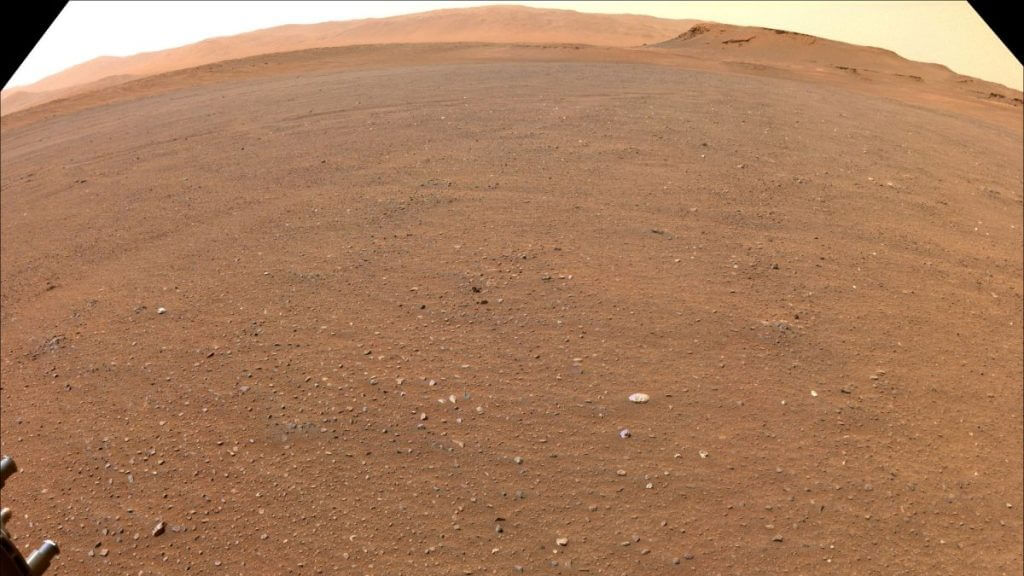NASA’s Perseverance Mars rover is scouting for landing sites that could one day be used by spacecraft that will fly the rover’s many Martian rock samples back to Earth.
Perseverance has been exploring Mars’ Jezero Crater since it landed in February 2021, collecting numerous samples of Martian rock and other sediments in a search for signs of ancient life on the Red Planet. If scientists here on Earth want to study those samples, they’ll obviously need a way to get them back home. That’s where the proposed Mars Sample Return (MSR) campaign comes in.
Mars Sample Return would see two lander missions sent to the Martian surface that would together collect Perseverance’s samples and launch them to a Red Planet orbiter, which would then haul them to Earth. It’s an extremely complicated endeavor planned in conjunction with the European Space Agency that has been eyed for a 2028 launch, which would put the return samples back on Earth in 2033 if all goes well. Before any of that can happen, however, the Mars Sample Return craft would need a suitable location to land.
Related: How NASA will launch Mars samples off the Red Planet
In a press release (opens in new tab) published Monday (July 11) by NASA’s Jet Propulsion Laboratory (JPL) in Southern California, JPL’s Richard Cook said the rover is looking for a “dull landing place” that offers no surprises for any future missions. “The flatter and more uninspiring the vista, the better we like it, because while there are a lot of things that need to be done when we arrive to pick up the samples, sightseeing is not one of them,” Cook said in the press release.
The future Mars Sample Return (MSR) missions would need a patch of land with a 200-foot (60 meters) radius that is nearly perfectly flat and devoid of rocks larger than 7.5 inches (19 centimeters) in diameter. The MSR team already has a location in mind, one they’re calling the “landing strip” because of how flat it appears. To get a more up-close picture of the landing strip, the MSR team used Perseverance’s navigation cameras to gather detailed imagery of the location.
“We had been eyeing these locations since before Perseverance’s landing, but imagery from orbit can only tell you so much,” said Al Chen, a Mars Sample Return engineer at JPL, in NASA’s press release (opens in new tab). “Now we have some up-close-and-personal shots of the landing strip that indicate we were right on the money. The landing strip will more than likely make our shortlist of potential landing and caching sites for MSR.”
The planned MSR mission will see three different vehicles sent down to the Martian surface: a European Space Agency-built “fetch rover,” the Sample Retrieval Lander (SRL) and the Mars Ascent Vehicle (MAV). The fetch rover will first collect Perseverance’s samples and then deliver them to the Sample Return Lander, a miniaturized launchpad with a robotic arm. The SRL will then use the arm to move Perseverance’s collected samples from the fetch rover into the MAV, a 10-foot-tall (3 m) rocket. Finally, the MAV will be launched into orbit, where it will be collected by an ESA orbiter and returned to Earth.
Despite an earlier proposed date, NASA is now planning a 2028 launch date and 2033 sample return date for the Mars Sample Return mission campaign.
Email Brett at BTingley@Space.com or follow Brett on Twitter at @bretttingley. Follow us on Twitter @Spacedotcom or on Facebook.

